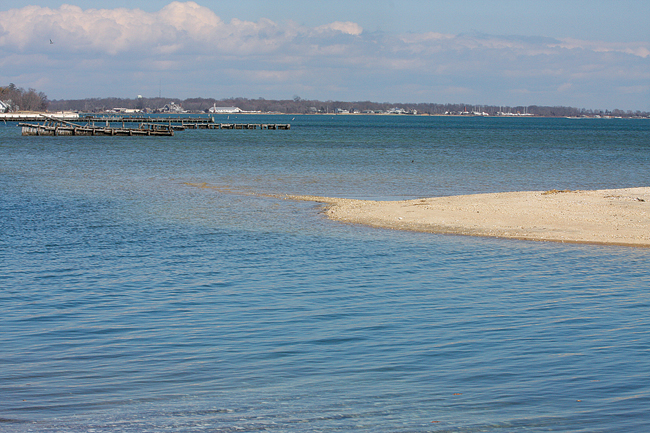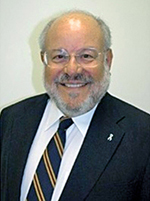Suffolk Closeup: Is the county doing enough to treat wastewater?


Suffolk County government for years delayed considering advanced wastewater treatment systems — to be installed at homes and featuring new technologies that reduce nitrogen discharges to a fraction of what traditional cesspools put out. Nitrogen discharges are considered a major cause of the brown and red tides and other algal blooms that have wreaked havoc in the bays and other water bodies of Suffolk.
Nearby states such as New Jersey, Massachusetts, Maryland and Rhode Island have embraced the systems. They constitute a breakthrough in wastewater disposal.
In recent times, Suffolk government has finally moved toward accepting the systems.
At the request of County Executive Steve Bellone, the Suffolk Legislature this summer authorized a change in the county’s sanitary code to legalize the systems here. This came after the Bellone administration embarked on a “Septic Demonstration Pilot Program,” under which a variety of advanced systems were installed for free at an initial 19 homes. Those systems were to be monitored by the county to see how they worked.
In heralding the undertaking this summer, as 20 more homes were added, Mr. Bellone said: “The first phase of the septic demonstration project has been extremely successful as we received tremendous feedback from our residents who are currently participating in the program and from industry experts.” (The homeowners chosen were selected through a lottery and are located in all 10 towns of Suffolk.)
But is the county moving as strongly as it should in the endeavor?
Kevin McAllister, founder and president of the Sag Harbor-based organization Defend H2O, has long been a critic of Suffolk’s lack of movement on the advanced systems.
“I don’t agree with going slow with approving the new systems,” Mr. McAllister said. “The county has been dragging its feet since 2005 on this.”
Of the recent actions, he said: “I can’t get too excited about baby steps.”
Mr. McAllister complains that for the Bellone administration “sewering is the primary interest” to increase population density, hoping this would “promote economic development.”
He finds great fault in the standard set by the county for the advanced systems in the amended sanitary code — 19 milligrams per liter of nitrogen in the wastewater discharged. “They can do better,” Mr. McAllister said.
Some of the systems are capable of reducing nitrogen to five milligrams per liter “and lower.” Thus the Suffolk standard is, in Mr. McAllister’s view, “a half-measure towards efforts to reduce nitrogen. It’s more about public appearance.”
Further, there is “no mandate for using the systems” in new installations or the replacement of old ones. “The county would make that voluntary,” he said.
“This is why I’m trying to get the towns to adopt their own local laws which mandate the installation of advanced systems in new installations or when a cesspool is replaced, and also to establish more stringent standards than Suffolk County has,” Mr. McAllister said.
This is compounded by what he calls the county’s “dirty sewage secret” on the commercial side of the wastewater equation. The county allows “grandfathering” in the replacement of wastewater systems at commercial sites. The county is charged with enforcing a state standard of 10 milligrams per liter of nitrogen in discharges at commercial sites. But “Suffolk officials have turned a blind eye,” Mr. McAllister said, citing as an example a 1960s-era motel on 2.8 acres on the waterfront in Hamptons Bays replaced by a 23-unit condominium complex. But the “redevelopment was allowed without requiring advanced wastewater treatment.” He said there are numerous other examples of this county “grandfathering.”
Vanessa Baird-Streeter, a spokesperson for Mr. Bellone, emphasizes that the 19 milligrams of nitrogen per liter standard “can be changed” based on the county’s pilot project that’s underway.
“The point of the pilot program is to insure that we are getting the best results — and determining which technologies will provide that,” she said. As to mandating installation of the advanced wastewater treatment systems, because of their cost, the Bellone administration has been “looking for funding mechanisms that can assist homeowners” in installing them. They can carry a cost of $25,000.
Mr. Bellone in April proposed a referendum this year on a surcharge to water bills for customers of the Suffolk County Water Authority and other water providers — $1 for every 1,000 gallons used — to help fund clean water efforts. This could have provided funds for installation of the advanced wastewater treatment systems. Mr. Bellone dropped the plan, however, in the face of resistance from state lawmakers concerned that the $73 million estimated to be raised annually would be used for other purposes by a cash-strapped Suffolk government. His administration seeks to revisit it in 2017.
On the East End, passage of the referenda to be on the ballots in the five East End towns next month to allow Community Preservation Fund monies (raised by a 2 percent tax on most real estate transactions) to be applied to clean water projects would help finance the installation of the systems by homeowners.
Top file photo: Peconic Bay near Pine Neck Road in Southold. (Credit: Barbaraellen Koch)
 The author is a veteran journalist and professor and a member of the Press Club of Long Island’s Journalism Hall of Fame. His Suffolk Closeup column is syndicated in newspapers across the county.
The author is a veteran journalist and professor and a member of the Press Club of Long Island’s Journalism Hall of Fame. His Suffolk Closeup column is syndicated in newspapers across the county.








